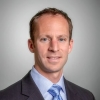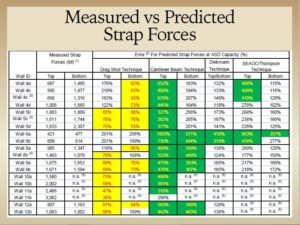28 Nov 2016
Utilizing Vacation = Increased Productivity
The average American employee leaves over 3 days of paid vacation unused, despite the evidence that spending time away from work is beneficial for both the employee and employer. Spending time away from work actually increases your productivity while at work. Research has shown this to be the case, and it makes logical sense. We tend to be more focused and driven to complete tasks in a timely manner when we know a vacation day is coming and we have less time to complete our workload. We spend less time socializing or wasting time on smart devices or social media, rather we work tirelessly to ensure we wrap things up before leaving on vacation. Research also shows spending time away from work decreases stress, improves health, boosts the office morale and creates a more loyal employee.
So why do workers continue to leave unused vacation on the table? Heavy workloads and often self imposed pressures to not take time off tend to be the biggest contributors. With the holiday season at our doorstep, may this serve as a good reminder of the benefits of using your vacation time with those that matter most. A healthy and well-rested employee is of greater value to their family and their employer. So, enjoy your time away and return with renewed energy and determination to be a benefit to your employer!
In November 2016, Scott Nacheman, MSc.Eng., AIA, from DeSimone Consulting Engineers, gave a talk on The Indiana State Fair Collapse Incident. He chose the United Service Organizations (http://www.uso.org/) for the SEU Speaker Inspires donation of the month.
Scott shared why he chose the USO: “I am involved with several organizations that support our men and women in uniform and feel that in today’s world of uncertainty the USO provides some much needed support and ‘gap filling’ for our nation’s protectors. The men and women of the United States Armed Forces have made significant sacrifices in order to protect our way of life domestically and abroad. The USO provides support and assistance to these brave individuals in order to make their deployments a little easier, and assists them in maintaining communication with loved ones back in the States.”
Thank you, Scott, for helping structural engineers with your SE University session, and for your designation of the United Service Organizations as our SEU Speaker Inspires Organization of the Month!
SE University began the SEU Speaker Inspires program in 2015 as a way to “pay it forward”, enabling our speakers to designate a charity/organization of their choice for SE University to make a donation to help improve our world.
28 Oct 2016
Purposeful Meetings
Do you often feel as though you spent half of your work day in a meeting, and have yet to get anything accomplished? Perhaps you are the one running the meetings and feel the participants lack enthusiasm or appear bored? Meetings can set the tone for your office environment, so why not strive for upbeat, purposeful, and productive meetings? Here are a few pointers to improve your participation and your ability to lead a productive meeting:
Tips for being an active participant:
- Be on time. Being late is both annoying to your peers and also requires items to be repeated, which leads to inefficiency.
- Be positive and look for the positive. In every meeting, there is at least some helpful piece of information that can you can use going forward.
- Participate. There is nothing worse than asking a group of people a question, and getting no response and blank stares. Be respectful of the presenter and give him/her the same courtesy that you would appreciate.
Tips for being an effective leader:
- Prepare well and delineate a clear purpose for the meeting. Try not to let the discussion get off-topic, or repetitive in nature. Aim to encourage the team with the purpose moving forward, with specific take-aways and goals for the immediate future.
- Be respectful of everyone’s time. Start on time, endeavor to end on time, and never fill the time just for the sake of it. Consider cancelling a meeting if there is no specific need for everyone to be gathered, or consider sending an email if the topics are only informational and do not require discussion.
- Be energetic and involve others. Meet with others ahead of time to encourage them to share their opinions, and set a positive and inclusive tone by asking questions of everyone.
Overall, meetings are a necessary part of our work culture, but they needn’t be tedious or negative. Make your next meeting a success by implementing one of these strategies, which can help others and improve your day too!
17 Oct 2016
SE Solutions Provides Scholarships to 3 MSCE Structures Students from Purdue University (2016)
SE Solutions was pleased to recently present scholarships to three Purdue University Structures students to help defray the cost of their education. Goran Milutinovic, Ryan Whelchel, and Alana Wilbee were the recipients of the awards. This is the fifth year that SE Solutions has offered the scholarships.
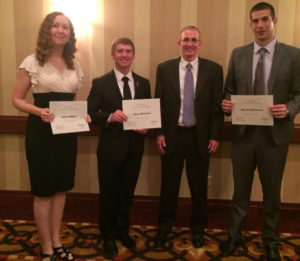
Purdue University MSCE Students and Scholarship Winners Alana Wilbee (left), Ryan Whelchel (middle), SE Solutions, LLC President, Brian Quinn, and Goran Milutinovic (right)
Goran Milutinovic received his BS in Civil Engineering from University of Belgrade in Serbia, Europe, and will complete his MSCE at Purdue in December 2016. His masters thesis was sponsored by INDOT and focused on the load rating of bridges and overweight vehicles. Goran became fascinated with long-span bridges as a child, which sparked his interest in structural engineering. Goran appreciates bridges, as he believes they represent intellectual effort as well as a connection to life and people that is depicted in his favorite novel, The Bridge on the Drina. After graduating, Goran will begin working with Janssen Spaans Engineering in Indianapolis. Goran is married and has a two year old daughter and is expecting another child very soon.
Ryan Whelchel received his BS in Architectural Engineering from Kansas State University. He is currently working on his MSCE at Purdue and plans to continue to pursue a PhD in Civil Engineering. Ryan is currently working as a graduate research assistant focusing on prestressed concrete bridges. Learning how buildings stand up and how to design structural systems has always been fascinating to Ryan, and upon graduating, he hopes to find work at a structural engineering firm where he can be challenged and create innovative structural solutions.
Alana Wilbee received her BS in Civil Engineering at Purdue in 2015. Following the completion of her MSCE at Purdue in December of 2016, she will begin working on her PhD research focusing on structural health monitoring techniques to support community-wide damage assessment in post-disaster scenarios. Alana is originally from Colorado Springs, and decided to pursue engineering when she realized the field would capitalize on her inclinations toward building and problem solving. After debating between aerospace and civil engineering, Alana decided that designing safe and beautiful places for people to live and work was more important to her than figuring out how to move people through the sky.
SE Solutions would like to congratulate each recipient and wish them future success in their fields of study as structural engineers.
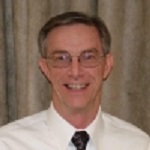
Roger LaBoube, PhD, P.E.
Missouri University of Science & Technology
In September 2016, Roger LaBoube, P.E., from Missouri University of Science & Technology, gave a talk on Design Aids and Design Examples for Cold-Formed Steel. He chose the Leukemia and Lymphoma Society (http://www.lls.org/) for the SEU Speaker Inspires donation of the month.
Roger shared his story about why he chose the Leukemia and Lymphoma Society: “On June 7, 2003, our daughter Jennifer married Russ. The wedding was a wonderful family event and Karen and I were both extremely happy for Jennifer and Russ. Four short months later, Russ was diagnosed with Hodgkins Lymphoma Stage 4B. After 10 months of treatments, Russ’ Hodgkins was forced into remission. Obviously, Karen and I were elated to learn of this news. However, in June 2005, Russ was diagnosed with leukemia. Following more chemotherapy and a stem cell transplant, the leukemia is now in remission. I chose to support LLS to honor both Russ and Jennifer for their fighting spirit and to help others who are also fighting so hard to defeat their cancer. Our family has benefited first hand from both the research and the patient services of the Leukemia and Lymphoma Society.”
Thank you, Roger, for helping structural engineers with your SE University session, and for your designation of the Leukemia and Lymphoma Society as our SEU Speaker Inspires Organization of the Month!
SE University began the SEU Speaker Inspires program in 2015 as a way to “pay it forward”, enabling our speakers to designate a charity/organization of their choice for SE University to make a donation to help improve our world.
24 Sep 2016
The Optimist Creed
(Note: due to a mistake in the Jan. 31st, 2017 edition of SE Dynamics, you may have been redirected to this page. For the article on DESK ORGANIZATION, please click go to https://findyourengineer.com/2017/01/27/desk-organization-for-maximum-productivity/)
When I was a senior in high school, I received a small scholarship from “The Optimist Club” of Northwest Indiana (www.optimist.org). I don’t recall the amount, but every little bit helped with paying for college. In addition to receiving a little money, I also received a small desk plaque with “The Optimist Creed” on it. 32 years later, I still have the plaque on my desk.
I’ve now made the commitment to read this every morning when I come into the office. I believe reading these words each day can help make it a better day. Why don’t you join me to see if it makes the day a little better for you and those around you.
(Note: For a printable version of this in 8.5 x 11, click here.)
“Promise Yourself…
To be so strong that nothing
can disturb your peace of mind.
To talk health, happiness, and prosperity
to every person you meet.
To make all your friends feel
that there is something in them.
To look at the sunny side of everything
and make your optimism come true.
To think only the best, to work only for the best,
and to expect only the best.
To be just as enthusiastic about the success of others
as you are about your own.
To forget the mistakes of the past
and press on to the greater achievements of the future.
To wear a cheerful countenance at all times
and give every living creature you meet a smile.
To give so much time to the improvement of yourself
that you have no time to criticize others.
To be too large for worry, too noble for anger, too strong for fear,
and too happy to permit the presence of trouble.
To think well of yourself and to proclaim this fact to the world,
not in loud words but great deeds.
To live in faith that the whole world is on your side
so long as you are true to the best that is in you.”
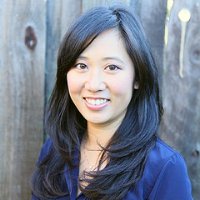
Annie Kao, P.E.
Simpson Strong-Tie
In August 2016, Annie Kao, P.E., from Simpson Strong-Tie, gave a talk on Effective Communication Skills for Workplace Conversations and Meetings. She chose the Structural Engineers Association of Southern California (SEAOSC) Foundation (http://seaosc.org/page-18108) for the SEU Speaker Inspires donation of the month.
Annie chose this organization because it “supports structural engineering research and scholarships to students majoring in structural engineering.”
Thank you, Annie, for helping structural engineers with your SE University session, and for your designation of the Structural Engineers Association of Southern California Foundation as our SEU Speaker Inspires Organization of the Month!
SE University began the SEU Speaker Inspires program in 2015 as a way to “pay it forward”, enabling our speakers to designate a charity/organization of their choice for SE University to make a donation to help improve our world.
26 Aug 2016
Accuracy in FTAO Wood Shear Wall Design Methods
Are you using the most accurate design method when you utilize Force Transfer Around Openings (FTAO) in your wood shear wall design? In the past, a variety of design techniques have been used to determine a rational analysis for wood shear walls, but recent research sheds some light on which methods are the most accurate for this type of design.
In the July 2016 SE University Core Session, Karyn Beebe, PE, LEED-AP, from APA – The Engineered Wood Association, covered Advancements in Force Transfer Around Openings for Wood Framed Shear Walls. During her presentation, Karyn highlighted recent results from research completed in a partnership between APA, University of British Columbia, and USDA Forest Products Laboratory. This research examined the internal forces generated during full-scale testing of a variety of walls with code-allowable openings of various sizes, and compared those forces with various design techniques and computer analytics that mimic testing data. The results proved to be very useful to determine which design methods would be most accurate for design engineers to implement in their FTAO wall designs.
As shown in the following table, a summary was created for 8 different wall configurations for FTAO, and compared the measured internal forces with the predicted forces from 4 different design techniques: The Drag Strut and Cantilever Beam Techniques, both developed by Zeno Martin, the Diekmann Technique, and the SEAOC/Thompson Technique. The first column shows the measured strap forces around the openings and the remainder of columns give the percent error in the predicted strap forces for the 4 methods. As you can see, the blocks highlighted yellow show an unconservative design (less than 100%), while the green blocks show an overly conservative design (greater than 300%). In most cases, the Diekmann and SEAOC/Thompson Techniques were useful in determining accurate strap forces. One outlier would be for Wall 6, which was a C-shaped panel, where the Drag Strut Technique was the best predicted response of strap forces.
As a design engineer, this information can be used to identify which design techniques would result in the most efficient design for our clients, depending on which type of shear wall is being used on any given project. To learn more about this recent research, Karyn provided a link to a full set of testing results that can be viewed on the APA website’s Resource Library. Registration is required to access the file, but there is no charge to register and access other documents in the Resource Library.
18 Aug 2016
The Making of a Great First Impression
We’ve all heard the expression, “You never get a second chance to make a first impression.” But how important is that initial impression? Science shows that our first impression of a person is often hard to dislodge. Many studies have shown how quickly first impressions are formed and also how difficult they are to change even when conflicting facts are presented. The bad news is many of these first impressions are strictly based on appearance, but the good news is we do have some control over our destiny.
In the August 2016 session of SE University, Annie Kao, PE, gave a presentation on Effective Communication Skills for Workplace Conversations and Meetings. Annie talked about the importance of first impressions and what we can do to be in control of our own impression on others.
First, our voice has a huge impact on how others perceive us. In 2014, a study at the University of Glasgow showed that participants largely agreed on their initial impressions of audio recordings of men and women saying the word “hello.” Participants overwhelmingly agreed on sorting the voices to have various personality traits, such as trustworthiness, aggressiveness, confidence, dominance, or warmth. Knowing this, we can be more aware of how our voice may be affecting our relationships, especially if you work in an office that does much of its correspondence over the phone. Controlling our tone and intensity and conveying a pleasant attitude through our voice can be effective tools, especially in difficult conversations. Annie recommended listening to this TED talk by Julian Treasure which addresses the use of our voice and its effects on others.
Not only does our voice help form an opinion, but our body language can affect the opinions of others. If you are talking with someone who is very energetic and passionate, you tend to feel more passionate as well. On the flip side, if you are taking to someone who seems uninterested and yawns, it tends to make you feel tired as well. This phenomenon is caused by “mirror” neurons in our brain that cause us to mimic the energy of those around us. We can use this to our advantage to help elevate our initial impression on others. Speaking with confidence and passion can inspire those around you and leave a positive impact.
Using these skills, we can do our best to improve our initial encounter with others. Confidence, whether fake or real, can convey competence and strength to those we meet. It is important to practice these skills daily, especially when conversing by phone, as initial impressions begin with “Hello.” Make that first word count, and you will be on your way to making a great first impression!
16 Aug 2016
“SEU Speaker Inspires” Organization of the Month: Purdue University Lyles School of Civil Engineering
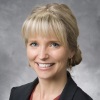
Karyn Beebe, P.E.
APA – The Engineered Wood Association
In July 2016, Karyn Beebe, P.E., from APA – The Engineered Wood Association, gave a talk on Advancements in Force Transfer Around Openings for Wood Framed Shear Walls. She chose Purdue University Lyles School of Civil Engineering (www.engineering.purdue.edu/CE) for the SEU Speaker Inspires donation of the month.
Karyn said the following about this organization, “The Civil Engineering Department at Purdue University provided me with an excellent education covering a broad base which prepared me technically for the workforce as well as the PE while offering a supportive community through the guidance of the professors, the Co-operative Education program, and Women in Engineering.”
Thank you, Karyn, for helping structural engineers with your SE University session, and for your designation of Purdue University Lyles School of Civil Engineering as our SEU Speaker Inspires Organization of the Month!
SE University began the SEU Speaker Inspires program in 2015 as a way to “pay it forward”, enabling our speakers to designate a charity/organization of their choice for SE University to make a donation to help improve our world.

